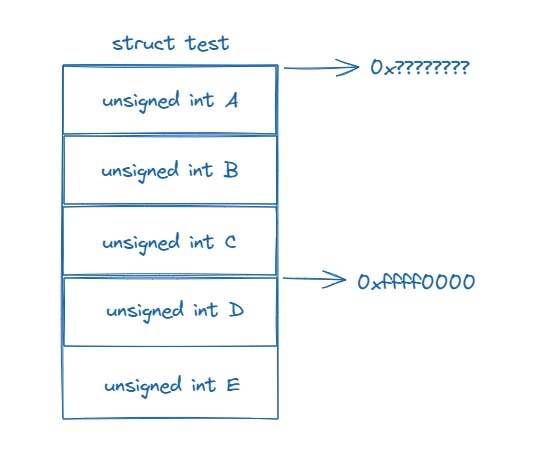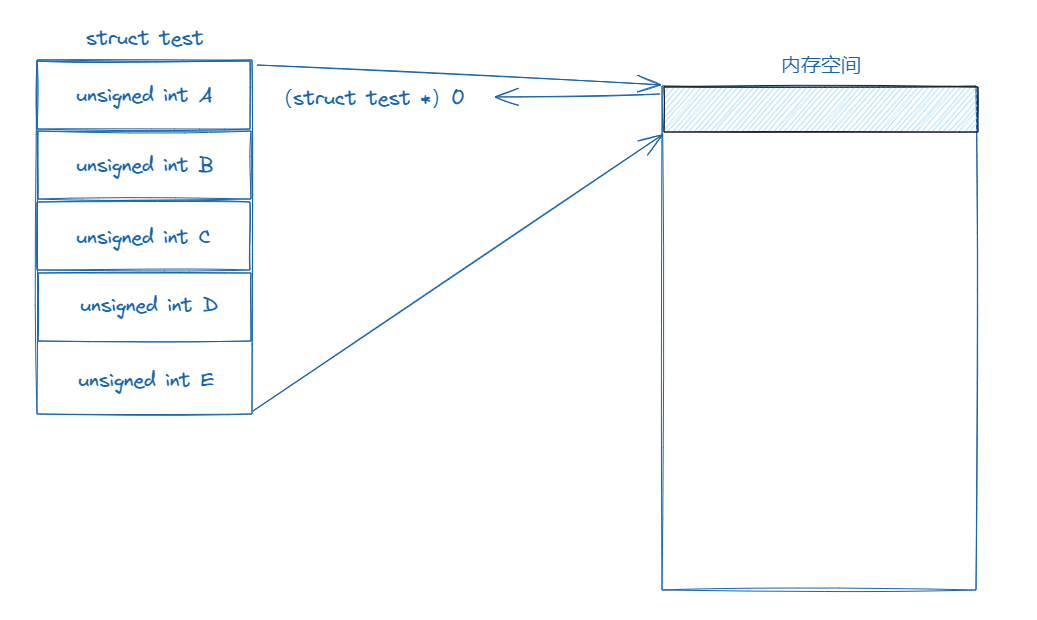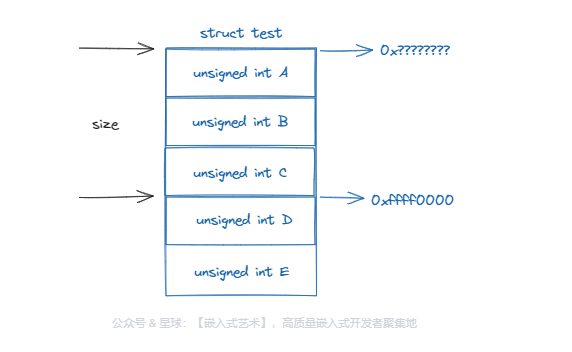Linux Version:6.6
Author:Donge
Github:
1、container_of函数介绍
container_of可以说是内核中使用最为频繁的一个函数了,简单来说,它的主要作用就是根据我们结构体中的已知的成员变量的地址,来寻求该结构体的首地址,直接看图,更容易理解。

下面我们看看
linux是如何实现的吧
2、container_of函数实现
/**
* container_of - cast a member of a structure out to the containing structure
* @ptr: the pointer to the member.
* @type: the type of the container struct this is embedded in.
* @member: the name of the member within the struct.
*
* WARNING: any const qualifier of @ptr is lost.
*/
函数名称:container_of
文件位置:
该函数里面包括了一些封装好的宏定义以及函数,比如:static_assert、__same_type、offsetof,以及一些指针的特殊用法,比如:(type *)0),下面我们一一拆解来看。

2.1 static_assert
/**
* static_assert - check integer constant expression at build time
*
* static_assert() is a wrapper for the C11 _Static_assert, with a
* little macro magic to make the message optional (defaulting to the
* stringification of the tested expression).
*
* Contrary to BUILD_BUG_ON(), static_assert() can be used at global
* scope, but requires the expression to be an integer constant
* expression (i.e., it is not enough that __builtin_constant_p() is
* true for expr).
*
* Also note that BUILD_BUG_ON() fails the build if the condition is
* true, while static_assert() fails the build if the expression is
* false.
*/
函数名称:static_assert
文件位置:
函数解析:该宏定义主要用来 在编译时检查常量表达式,如果表达式为假,编译将失败,并打印传入的报错信息
-
expr:该参数表示传入进来的常量表达式 -
...:表示编译失败后,要打印的错误信息 -
_Static_assert:C11中引入的关键字,用于判断表达式expr并打印错误信息msg。
在container_of函数中,主要用来断言判断
static_assert(
__same_type(*(ptr), ((type *)0)->member) || __same_type(*(ptr), void) ,
"pointer type mismatch in container_of()"
);
2.2 __same_type
/* Are two types/vars the same type (ignoring qualifiers)? */
函数名称:__same_type
文件位置:
函数解析:该宏定义用于检查两个变量是否是同种类型
-
__builtin_types_compatible_p:gcc的内建函数,判断两个参数的类型是否一致,如果是则返回1 -
typeof:gcc的关键字,用于获取变量的类型信息
了解完__same_type,想要理解__same_type(*(ptr), ((type *)0)->member),需要先弄明白(type *)0的含义。
更多干货可见:
2.3 (type *)0
(type *)0,该如何理解这个表达式呢?
-
首先,
type是我们传入进来的结构体类型,比如上面讲到的struct test,而这里所做的可以理解为强制类型转换:(struct test *)addr。 -
addr可以表示内存空间的任意的地址,我们在强制转换后,默认后面一片的内存空间存储的是该数据结构。

-
而
(type *)0的作用,也就是默认将0地址处的内存空间,转换为该数据类型。

-
我们就把
0,当作我们正常的addr地址变量来操作,((type *)0)->member,就是获取我们结构体的成员对象。 -
((type *)0)->member:是一种常见的技巧,用于直接获取结构体type的成员member的类型,而不需要定义一个type类型的对象。
2.4 offsetof
函数名称:offsetof
文件位置:
函数解析:该宏定义用于获取结构体中指定的成员,距离该结构体偏移量。

-
TYPE:表示结构体的类型 -
MEMBER:表示指定的结构体成员 -
__builtin_offsetof:gcc内置函数,直接返回偏移量。
在新的linux源码中,直接引用了gcc内置的函数,而在老的内核源码中,该偏移量的实现方式如下:
同样用到了((TYPE *)addr),上面我们知道
-
((TYPE *)addr)->MEMBER:表示获取该结构体的成员 -
&((TYPE *)addr)->MEMBER):加了一个&,表示地址,取该成员的内存地址。-
比如我们
addr=0x00000010,那么&((TYPE *)0x00000010)->MEMBER)就相当于0x00000010+size -
比如我们
addr=0,那么&((TYPE *)0)->MEMBER)就相当于size
-
到这里,我们对container_of函数内部涉及的相关知识了然于胸,下面我们再来看container_of,简直容易到起飞。
2.5 container_of
-
static_assert:断言信息,避免我们传入的参数类型不对,而做的编译检查处理,直接忽略。
#define container_of(ptr, type, member) ({ \
void *__mptr = (void *)(ptr); \
((type *)(__mptr - offsetof(type, member))); })
-
offsetof(type, member):计算的是结构体中的成员的偏移量,这里称为size -
(__mptr - offsetof(type, member)):也就是根据我们已知的成员变量地址,计算出来结构体的首地址 -
((type *)(__mptr - offsetof(type, member))):最后强制转换为(type *),结构体指针。
比如,我们已知的结构体成员的地址为
0xffff0000,计算之后如下:

3、总结
linux内核中,小小的一个函数,内部包括的技巧如此之多:static_assert、__same_type、(type *)0、offsetof。
了解完内部完整的实现手法之后,我们也可以手码一个container_of了 :)
